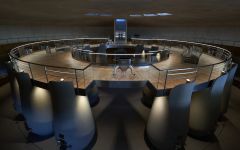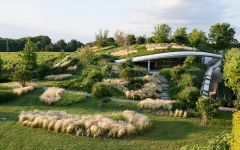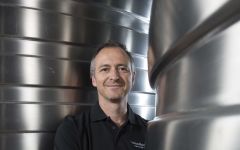Chateau Haut-Bailly 2004
- Decanter
-
Wine
Enthusiast -
Robert
Parker -
Wine &
Spirits -
Jeb
Dunnuck -
Wine
Spectator -
James
Suckling



Product Details
Your Rating
Somm Note
Winemaker Notes
Professional Ratings
-
Decanter
Gorgeous smoke and concentration on the nose, retaining largely primary fruit character even at 16 years old. This remains focused on cassis and black cherry character, touches of a bitter black chocolate and still clearly confident tannins. Harvest September 27 to October 18. Less graceful than some years like 2001, at least at this stage, but fresh, ripe and still young, which translates into huge promise for future development. Drinking Window 2020 - 2038
-
Wine Enthusiast
A beautifully balanced, harmonious wine—as so often in recent years from Haut-Bailly—this is the epitome of deliciously drinkable Bordeaux. The wild strawberry flavors and the elegant, velvet texture are balanced by firm, structured tannins. Like other vintages from Haut-Bailly, expect this to develop over many years. Cellar Selection
-
Robert Parker's Wine Advocate
The 2004 Haut-Bailly is a candidate for the finest wine of the appellation. Its dark ruby/purple color is accompanied by classic aromas of scorched earth, sweet black currants, cherries, and a hint of pain grille. Light on its feet, but substantially flavored, it possesses stunning purity, good acidity, ripe tannin, and abundant flavor as well as length. It builds incrementally and subtly in the mouth, but it’s the real deal. Anticipated maturity: 2010-2024.
-
Wine & Spirits
Tannins wash over the red-berry fruit component of this wine, which feels complete if not yet evolved. The potent tannic structure grows more expansive with air, a pure mineral essence for now. The fruit keeps it sleek with its own stony complexities waiting to develop. A classical Bordeaux for the cellar.
-
Jeb Dunnuck
Another wine that shines in the vintage, the 2004 Château Haut-Bailly has a classic, almost old school-like vibe in its cedary red and black fruit, but it brings solid sweetness and depth of fruit on the palate, with silky tannins as well as nicely integrated acidity. It has some rock-solid mid-palate depth as well, and this meaty, complex, satisfying effort will evolve for another 7-8 years and have a gradual decline after that.
-
Wine Spectator
Blackberry and licorice aromas follow through to a full-bodied palate, with velvety tannins and a long, rich aftertaste. Lots going on. This is an excellent wine and close to the 2000 in quality. Best after 2010. 6,000 cases made.
-
James Suckling
The racy, precise nature of this beautiful wine underlines the beautiful winemaking here. It shows plenty of smoky, berry and mineral character yet is reserved and subtle. It defines what the British call claret: it’s all about finesse and balance.
Other Vintages
2022-
Jeb
Dunnuck -
James
Suckling -
Robert
Parker - Decanter
-
James
Suckling - Decanter
-
Robert
Parker -
Jeb
Dunnuck
-
James
Suckling -
Jeb
Dunnuck -
Wine
Enthusiast -
Robert
Parker -
Wine
Spectator - Decanter
-
James
Suckling -
Wilfred
Wong - Decanter
-
Wine
Enthusiast -
Robert
Parker -
Jeb
Dunnuck
-
James
Suckling -
Jeb
Dunnuck - Decanter
-
Wine
Enthusiast -
Robert
Parker -
Wine
Spectator
-
Robert
Parker - Decanter
-
Wine
Enthusiast -
James
Suckling -
Jeb
Dunnuck -
Wine
Spectator
-
Robert
Parker - Decanter
-
Jeb
Dunnuck -
James
Suckling -
Wine
Enthusiast -
Wine
Spectator -
Connoisseurs'
Guide
-
Jeb
Dunnuck -
James
Suckling - Decanter
-
Robert
Parker -
Wine
Enthusiast -
Wine
Spectator
-
Wilfred
Wong -
Wine
Enthusiast -
James
Suckling -
Jeb
Dunnuck - Decanter
-
Wine
Spectator -
Robert
Parker
-
Jeb
Dunnuck -
Wilfred
Wong -
James
Suckling -
Wine
Enthusiast -
Robert
Parker -
Wine
Spectator
-
Wine
Enthusiast - Decanter
-
Robert
Parker -
James
Suckling -
Wine
Spectator -
Jeb
Dunnuck
-
Jeb
Dunnuck - Decanter
-
James
Suckling -
Wilfred
Wong -
Wine
Enthusiast -
Wine
Spectator -
Robert
Parker
-
Robert
Parker -
Jeb
Dunnuck - Decanter
-
James
Suckling -
Wine
Enthusiast -
Wine
Spectator
-
Robert
Parker -
Jeb
Dunnuck - Decanter
-
Wine
Enthusiast -
James
Suckling -
Wine
Spectator
- Decanter
-
Robert
Parker -
Wine
Spectator -
Jeb
Dunnuck
-
Jeb
Dunnuck - Decanter
-
Wine
Spectator -
Robert
Parker -
James
Suckling -
Wine
Enthusiast -
Connoisseurs'
Guide
- Decanter
-
James
Suckling -
Jeb
Dunnuck -
Robert
Parker
- Decanter
-
Jeb
Dunnuck -
Robert
Parker







The vineyard of Haut-Bailly as we know it today began to take shape when the Goyanèche and then the Daitze family acquired and unified the best vine growing plots in the 1530s. The estate remained in the Daitze Family until 1630 when it was purchased by Firmin Le Bailly and Nicolas de Leuvarde, wealthy Parisian bankers and lovers of Graves wines.
Following substantial investments, the property continued to be passed down the Bailly family line until 1736, when Irishman Thomas Barton took the helm. His strong business network allowed him to spread word about the quality of Chateau Haut-Bailly at a time when French ‘claret' was beginning its rise to stardom in England and Ireland.
Throughout the 18th century powerful, well-connected and ambitious owners drove Haut-Bailly to new heights, including Christophe Lafaurie de Monbadon and his son Laurent who went on to become Mayor of Bordeaux in 1805.
In 1872, Alcide Bellot des Minières acquired the estate and constructed the imposing, stone chateau building that remains to this day. He pioneered a precise, science-driven approach to viticulture, becoming a figure of legend widely known as the 'King of Vintners'. Thanks to Alcide's incredible drive, Haut-Bailly experienced a remarkable golden age, commanding the same prices as the First Growths: Lafite, Latour, Margaux and Haut-Brion.
The purchase of Haut-Bailly in 1955 by Daniel Sanders, a Belgian negociant, opened up a new era. Daniel and his son, Jean, recomposed the vineyard, renovated the winery and took pains to select only grapes from the best vines for their grand vin. They succeeded in giving the wines a unique style and reputation, and Haut-Bailly recovered its image as a great wine on the international marketplace.
In July 1998 Chateau Haut-Bailly was purchased by American Robert G. Wilmers, chairman and CEO of the M&T Bank based in Buffalo, New York. A lifelong lover of Bordeaux Grands Crus, Bob was behind every strategic decision, ensuring that Haut-Bailly followed a path of progression and continuity whilst remaining ever-respectful of its heritage.
After Mr. Wilmers purchased the property, he first asked Jean Sanders to stay on board, and then Véronique Sanders, fourth generation, to serve as general manager, overseeing a far-reaching investment programme to modernise the vineyards, cellars, offices, and chateau itself.
For Bob and his wife Elisabeth, Haut-Bailly went well beyond a financial investment: it was a joint passion. Following the sad passing of Bob in December 2017, his family has taken over and will continue in his footsteps. Together with the management team, they are committed to continuing Bob’s work in the same spirit and energy as in the past twenty years. The many recently initiated and future projects will be pursued.
With the 2021 vintage, Chateau Haut-Bailly debuted a contemporary, custom-built winery which was completed at the end of 2020. The building allows them to carry out precision work in optimal conditions thanks to the space, natural light and technical innovation which are at the heart of the project.

One of the world’s most classic and popular styles of red wine, Bordeaux-inspired blends have spread from their homeland in France to nearly every corner of the New World. Typically based on either Cabernet Sauvignon or Merlot and supported by Cabernet Franc, Malbec and Petit Verdot, the best of these are densely hued, fragrant, full of fruit and boast a structure that begs for cellar time. Somm Secret—Blends from Bordeaux are generally earthier compared to those from the New World, which tend to be fruit-dominant.

Recognized for its superior reds as well as whites, Pessac-Léognan on the Left Bank claims classified growths for both—making it quite unique in comparison to its neighboring Médoc properties.
Pessac’s Chateau Haut-Brion, the only first growth located outside of the Médoc, is said to have been the first to conceptualize fine red wine in Bordeaux back in the late 1600s. The estate, along with its high-esteemed neighbors, La Mission Haut-Brion, Les Carmes Haut-Brion, Pique-Caillou and Chateau Pape-Clément are today all but enveloped by the city of Bordeaux. The rest of the vineyards of Pessac-Léognan are in clearings of heavily forested area or abutting dense suburbs.
Arid sand and gravel on top of clay and limestone make the area unique and conducive to growing Sémillon and Sauvignon blanc as well as the grapes in the usual Left Bank red recipe: Cabernet Sauvignon, Merlot, Cabernet Franc and miniscule percentages of Petit Verdot and Malbec.
The best reds will show great force and finesse with inky blue and black fruit, mushroom, forest, tobacco, iodine and a smooth and intriguing texture.
Its best whites show complexity, longevity and no lack of exotic twists on citrus, tropical and stone fruit with pronounced floral and spice characteristics.
